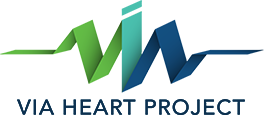While unanticipated death due to sudden cardiac arrest (SCD) is always tragic, it seems to strike a more sensitive chord when the victim is a child or young adult. Many of these deaths have been attributed to an undetected congenital heart disease which presented itself when the victim was engaged in physical exertion during some kind of athletic competition or training.
In recent years, a growing number of state legislatures have taken action to protect our children from sudden cardiac arrest (SCA) by doing the following:
- Passing laws requiring more comprehensive physical exams before allowing participation in athletic events.
- Placing automated external defibrillators (AED) in schools and facilities where athletic activities take place.
- Training school personnel on AED use and CPR.
Sadly, most of these laws were introduced following the death of a student participating in athletics and the publicity generated from the tragedy. But thanks mainly to the grassroots efforts of local parent groups, community organizations, and national organizations—such as the American Heart Association and the Sudden Cardiac Arrest Foundation—the number of states enacting some sort of law mandating AEDs and CPR training in schools continues to grow. New Jersey recently became the twentieth state to pass legislation requiring AED placement and CPR training of school personnel in every public and private high school in the state.
Other states, like California, though not successful in passing mandatory AEDs in schools laws—due, we are told, to fiscal constraints—have enacted resolutions encouraging school districts to acquire AEDs and train their personnel in CPR/AED use. And in an effort to minimize possible liability concerns, the California legislature sent a bill to the governor for signature that would:
- Authorize school districts to solicit and receive non-state funds to acquire and maintain AEDs.
- Provide Good Samaritan protection to school districts and school employees.
Another effort which has gained momentum in the past couple of years is mandatory CPR and AED training of high school students prior to graduation. Six states passed mandatory CPR laws in 2014, bringing the national total to 18 states. By the end of the 2014–2015 school year, over one million high school graduates will be trained in CPR.
That’s one million men and women who will have grown up with AEDs around them. These young people will enter college and the workplace trained in how to react to a cardiac emergency and will be accustomed the life-saving benefits of early CPR and access to AEDs.
This is surely something to think about as we educate and protect our youth.
